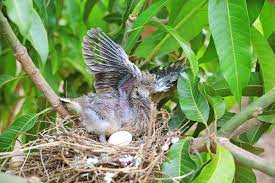The cuckoo bird, known scientifically as Cuculus canorus, is a mysterious and captivating avian species that has fascinated bird enthusiasts and researchers alike. With its unique breeding habits, mesmerizing call, and intriguing behaviors, the cuckoo bird has left an indelible mark on the natural world. Join us as we delve into 22 fascinating facts about cuckoos, shedding light on their complex lives and the enigma they bring to the avian realm.

1. Iconic Call: The distinctive call of the male cuckoo, often heard as “cuckoo-cuckoo,” has become a harbinger of spring in many regions.
2. Brood Parasitism: Cuckoos are infamous for their brood parasitic behavior, laying their eggs in the nests of other bird species.
3. Mimicry Mastery: Cuckoos have evolved to mimic the appearance of their host species’ eggs, helping their own eggs go unnoticed.
4. Rapid Development: Cuckoo chicks hatch earlier than their host species’ chicks, giving them a competitive edge for food.
5. Host Deception: Female cuckoos often sneak into the nests of their chosen host species to deposit their eggs covertly.
6. Diverse Hosts: Cuckoos target a wide range of host species, adapting their tactics to fool different kinds of birds.
7. Evolved Adaptations: Some host species have evolved defenses against cuckoo parasitism, leading to an ongoing evolutionary arms race.
8. Short Visits: Male cuckoos are rarely seen near the nests, focusing primarily on attracting females and mating.
9. Global Distribution: Cuckoos can be found in various habitats around the world, from forests to grasslands.
10. Cuckoo Clock Connection: The well-known cuckoo clock was inspired by the call of the common cuckoo, although the bird itself is not usually associated with clocks.
11. Migratory Wonders: Many cuckoo species are known for their long migratory journeys, traveling thousands of miles each year.
12. Nomadic Behavior: Some cuckoos are considered nomadic, following the availability of food rather than a fixed migration pattern.
13. Insectivorous Diet: Cuckoos primarily feed on insects, such as caterpillars, grasshoppers, and beetles.
14. Camouflaged Plumage: Cuckoos often have cryptic plumage, allowing them to blend into their surroundings and avoid detection.
15. Elusive Sightings: Spotting cuckoos in the wild can be a challenge due to their secretive nature and habitat preferences.
16. Varied Vocalizations: While the iconic “cuckoo” call is well-known, cuckoos also produce a variety of other vocalizations.
17. Cultural Symbolism: In folklore, cuckoos have been associated with themes of transformation, mystery, and spring’s arrival.
18. Scientific Study: Cuckoos have intrigued scientists for centuries, inspiring research into their behaviors and interactions.
19. Threats and Conservation: Some cuckoo species are facing habitat loss and decline due to human activities.
20. Host Recognition: Female cuckoos have the remarkable ability to recognize the songs of their host species, aiding in successful parasitism.
21. Complex Courtship: Male cuckoos engage in elaborate courtship displays, showcasing their fitness to potential mates.
22. Ecological Impact: Cuckoos play a role in controlling insect populations, making them important contributors to ecosystem health.
Conclusion
The cuckoo bird’s mysterious and unconventional behaviors continue to captivate our imagination, offering a unique window into the complexities of the natural world.



















Add Comment